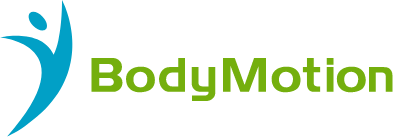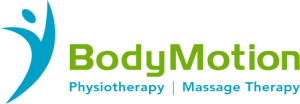A myotherapist is a practitioner of massage therapy who specialises in the treatment of soft tissue, such as muscle and connective tissues. In this article, the team at BodyMotion Physiotherapy explore a selection of myotherapy benefits, some common treatments like massage and trigger point therapy, and much more.
What is Myotherapy Treatment?
Myotherapy is a form of manual therapy that focuses on the assessment, treatment, and management of musculoskeletal pain and dysfunctions. It is commonly used to treat conditions such as muscle spasms, strains, and tears, as well as headaches, back pain, and other chronic pain conditions.
Myotherapists are trained to identify and treat the underlying causes of musculoskeletal pain and dysfunctions, rather than simply addressing the symptoms.
What are the Benefits of Myotherapy Treatment?
Myotherapy involves assessing, treating, and managing musculoskeletal conditions, aiming to reduce pain and improve movement and function. Myotherapy benefits include:
- Effective pain relief: Myotherapy can relieve a wide range of musculoskeletal conditions, including chronic pain, headaches, and sports injuries. By targeting the cause of the pain and addressing any underlying dysfunctions, myotherapy can help to reduce pain and improve overall function and mobility.
- Improved posture: Poor posture can lead to a range of musculoskeletal problems, including neck and back pain, as well as joint problems and muscle imbalances. Myotherapy can help to correct poor posture by addressing any underlying dysfunctions and strengthening weak muscles. This can help to improve overall posture and reduce the risk of future musculoskeletal problems.
- Enhanced athletic performance: Myotherapy can help athletes to improve their performance by increasing flexibility, strength, and endurance. It can also help to prevent sports-related injuries by identifying and addressing any underlying dysfunctions or muscle imbalances.
- Faster recovery from injuries: If you have sustained a sports injury or other musculoskeletal problem, myotherapy can help to speed up your recovery. By addressing the cause of the injury and providing targeted treatment, myotherapy can help to reduce pain and swelling, improve mobility, and get you back to your normal activities as quickly as possible.
- Increased overall health and well-being: In addition to providing relief from musculoskeletal pain and improving athletic performance, myotherapy can also promote overall health and well-being. By improving posture and reducing pain, myotherapy can help increase flexibility and mobility, which can positively impact your overall quality of life.
When Might You Need Myotherapy Treatment?
Myotherapy can be beneficial for people who experience chronic or acute musculoskeletal pain, or those who have physical limitations or restrictions due to muscle imbalances or dysfunction. It can also be helpful for people who are looking to improve their overall flexibility and mobility, or enhance their physical performance and prevent injuries.
What Does a Myotherapist Do Differently from a Physiotherapist?
Myotherapy and physiotherapy are both types of healthcare professions that focus on treating musculoskeletal conditions, such as injuries, chronic pain, and movement disorders. However, there are some key differences between the two:
- Scope of practice: Myotherapy is a form of manual therapy that primarily focuses on the assessment, treatment, and management of musculoskeletal pain and dysfunction. It often involves using techniques such as massage, stretching, and dry needling to reduce pain and improve movement. Physiotherapy, on the other hand, is a broader field that includes a wider range of treatment approaches, including exercise therapy, manual therapy, and electrotherapy.
- Education and training: Myotherapists typically have a background in massage therapy or a related field, and may hold a diploma or degree in myotherapy. Physiotherapists, on the other hand, typically have a university degree in physiotherapy and are regulated by a professional body.
- Patient population: Both myotherapy and physiotherapy can be used to treat a wide range of patients, including athletes, the elderly, and people with chronic conditions. However, physiotherapy may be more commonly used to treat patients with more complex conditions, such as neurological or respiratory disorders.
Common Myotherapy Treatments
- Trigger Point Therapy: The application of pressure to specific points on the body, known as trigger points. These points are often tender or painful when pressed and can cause referred pain in other areas of the body. Myotherapists aim to release muscle tension and reduce pain by applying pressure to these points.
- Passive Stretching: Involves the therapist stretching the patient’s muscles using a variety of techniques, such as gentle stretches, traction, or mobilisations. Passive stretching is often used to improve flexibility and range of motion in conjunction with other treatments.
- Massage: Hands-on techniques to manipulate the soft tissues of the body, including kneading, stroking, and tapping. Massage improves circulation, reduces muscle tension, and improves range of motion.
- Dry Needling: The insertion of thin needles into the skin to stimulate specific points on the body. This treatment is based on the principles of acupuncture and is often used to release muscle tension and reduce pain.
Book a Myotherapy Appointment with BodyMotion Physiotherapy Today
If you would like to book an appointment or learn more about the potential benefits of myotherapy treatment, please contact us at BodyMotion Physiotherapy today.



